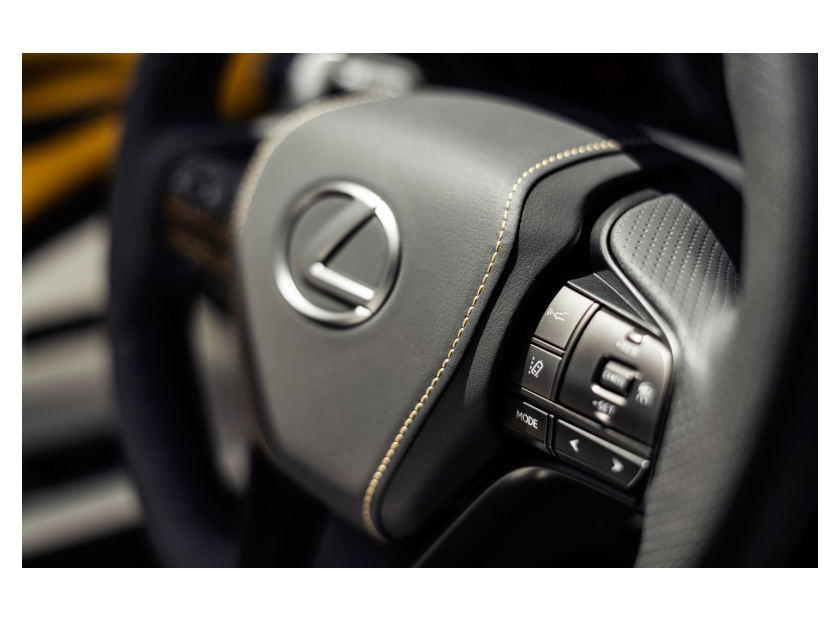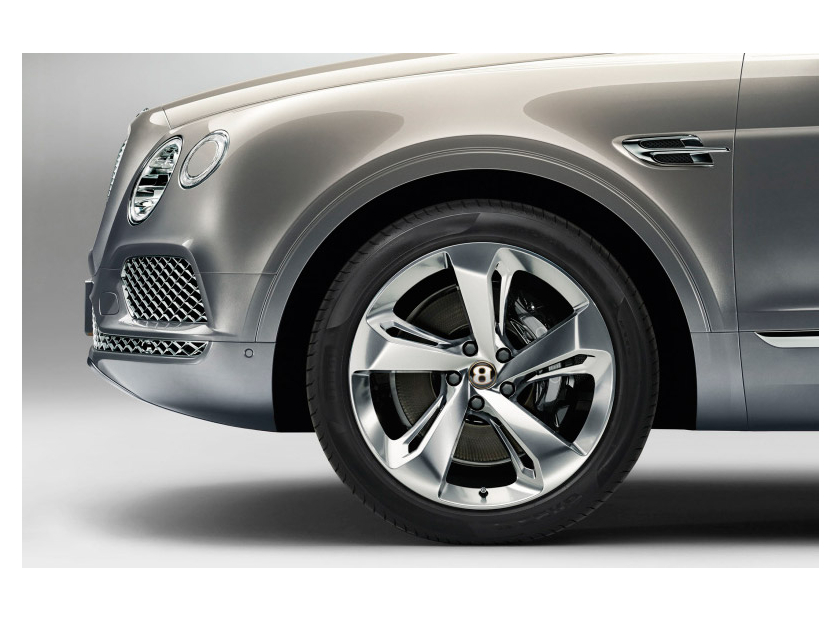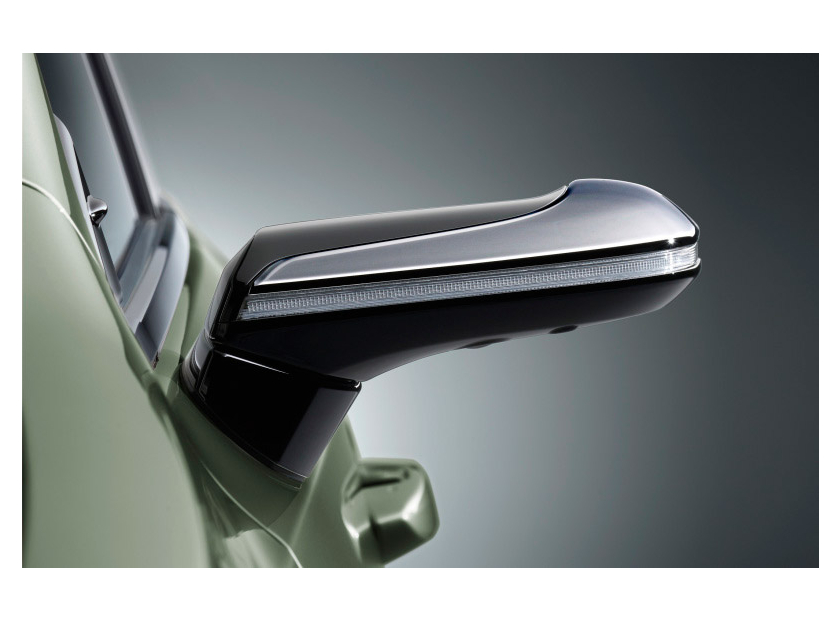Car
-
Publié: Avril 11, 2023Catégories: CarLire La Suite
Lexus is readying itself for the Pebble Beach Concours d'Elegance, and for the occasion, the carmaker is introducing a new concept version of the LC in a striking color scheme.
The Flare Yellow exterior paint is coupled with dark, forged alloy 21" wheels and a carbon fiber roof. The yellow color continues on the inside, as the alcantara door panels match the outside. The leather seats also feature yellow stitching, as do the instrument panel, the center console and the glovebox.
The yellow car is the second stage in the Lexus LC Inspiration Series, and it was preceded by a blue LC500 in October 2017. Well, we say blue, but Lexus claimed the special paint itself had no blue pigment, and the impression of color was just the product of nano-structures embedded in the paint, which reportedly took eight months to produce. With the yellow paint, there are no such claims, but we wouldn't be surprised if Lexus told us it was made from crushed yellow pearls.In addition to the yellow LC concept, Lexus is also displaying a customized version of the UX 250h. The VIP Auto Salon-built UX, wrapped in blue, comes with exterior enhancements together with a sportier suspension and exhaust setup, as well as a custom bike rack that holds a Lexus F Sport road bike.
-
Publié: Avril 11, 2023Catégories: CarLire La Suite
Porsche unveiled a special continuation model at this year's Monterey Car Week called Project Gold, a 1998 Porsche 911 Turbo 993. And while it may look as though it was simply a 993 given a flashy coat of paint and corresponding interior, the story is more complicated than that, as we learned from Porsche's factory restoration manager, Uwe Makrutzki. In reality, it's the most carefully, obsessively built 993 to come out of Porsche.
First some background on the project. Makrutzki told us that the first discussions for Project Gold began about two and a half years ago, and they began because of a confluence of happenings at Porsche. Porsche's 70th anniversary of car building was coming up, and Porsche Exclusive Manufaktur had just launched its own special vehicle, the 911 Turbo S Exclusive Series. Porsche Classic, the department that handles restorations, was wanting to do something special, too, inspired by the Exclusive Series 911. Fortunately for the department, they noticed that there was still a complete, bare production-line 993 chassis built in 1994 that nothing had been done with. All of this led to the start of Project Gold.
For a bit over a year and a half, the Porsche restoration team was working on the car. The team decided that they wanted it to very much be a 993 with similar specifications to the original, rather than an over-the-top show car. This is why it has a twin-turbo 3.6-liter Turbo S 993 engine, and not something more powerful from a newer 911. That doesn't mean there wouldn't be any upgrades to the car, though. The chassis did start as a plain 911 Turbo, not a Turbo S, and it lacked the fender intakes of the higher-spec car. The team wanted to add them, which turned out to be quite difficult as there was no tooling to add the intake inlets after the body had been built. So those intakes were added by hand, and to ensure they were properly shaped and sized, Porsche brought in people that worked on the 993 production line to help
-
Publié: Avril 11, 2023Catégories: CarLire La Suite
For the entirety of Bentley's 100th year in business, the English carmaker will adorn its products with a Centenary Specification. The package consists of unique badging with specially developed Centenary Gold badge highlights, available Centenary Gold thread for the headrest logos, contrast stitching and cross stitching, and a "centenary welcome light" outside the vehicle. The in-house craftsmen have also developed unique embroidery.
Bentley says the gold hue was inspired by metalwork on vintage models like the 1919 EXP 2 (pictured, red and silver) and 1929 Birkin Blower (pictured, green), the latter one of the company's Le Mans winners driven by Sir Henry "Tim" Birkin. The hue possesses an "elegant warm tone and a deep fluid shadow." The steering wheel badge, key fob, shift knob, and wheel center caps feature the tinted ring. The "B" badge on the radiator surround also features "1919-2019" script, and that script is found on the tread plates, too.
For those who don't know, eponymous founder Walter Owen Bentley's engineering career began with locomotives — which he loved more than cars at one point — and motorcycles, before settling on automobiles. He bought his first car in 1910, a French DFP, and after improving it himself, set a 10-lap record at the Brooklands circuit. In 1912 he opened a DFP franchise with his brother Horace Milner as Bentley & Bentley, and further upgraded the car with a new piston design that was 88 percent aluminum and 12 percent copper. The Royal Naval Air Service adopted Bentley's piston design and Bentley's re-designed Clerget airplane engines, dubbed the Bentley Rotary.
After the war, Bentley refocused on cars, and in 1919 released the 3-Litre, which boasted features like a cross-flow head, overhead cams working four valves per cylinder, and twin plugs in each cylinder. The company delivered the first production model in 1921, then went racing and won the second edition of Le Mans in 1924. That is how Bentley beg
-
Publié: Avril 11, 2023Catégories: CarLire La Suite
Concept cars have been trying to replace side mirrors with cameras for decades, and now Lexus is actually going to do it on a production car. There's one important caveat though: It's only for Japan.
First implemented for the recently redesigned (and recently reviewed) 2019 Lexus ES, the side mirrors are being replaced with small, aerodynamic camera stalks. Those small cameras tucked into the stalks provide a constant video feed to five-inch screens placed at the base of the car's A-pillars. The biggest reason manufacturers are pushing this kind of tech is to improve aerodynamics. Swapping those side mirrors out for something much smaller creates less drag, and ultimately, better fuel economy.
Lexus says there are a couple other advantages for going digital here too. For one, the camera modules are able to resist the accumulation of raindrops and snow due to their design. There's also less wind noise since the mirrors cut through the air so well. This will become even more important as silent electric cars trickle their way onto the market. The actual visibility is supposed to be better as well. Lexus says that the view is "enhanced" when you activate a turn signal, and helps provide better rearward vision when put into reverse — think Honda LaneWatch, but way cooler.
We won't be seeing this futuristic-looking side mirror technology in the U.S. for some time, because it's still not legal here. The technology is legal to use in Europe, but Lexus says it'll only be offered in Japan for the time being. Audi, though, will be bringing its side camera mirror technology to Europe by the end of the year with the E-Tron. There's still no release date on the electric SUV, but it might be the first to market with the tech on that continent.
Audi wants to bring side mirror camera technology to the U.S. in its E-Tron, but the regulations still need to be changed to allow that here - the E-Tron is expected to be for sale in the U.S. sometime in 2019. B
















